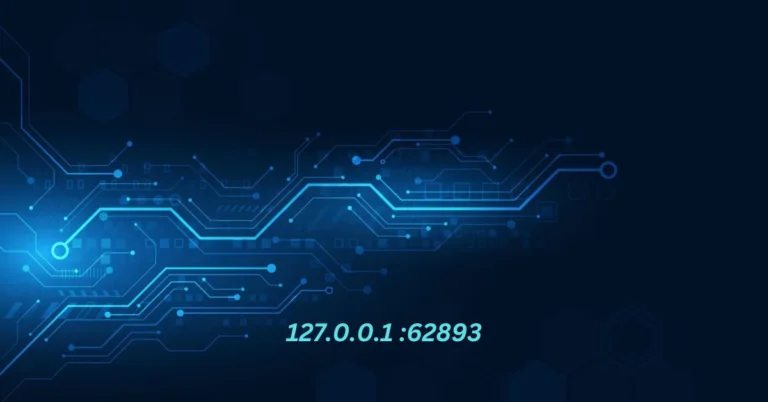Building Offline-First Flutter Apps for Unreliable Connectivity
Most people do not appreciate the importance of internet connection in this fast-growing technological society. However, millions of people still cannot connect to the Internet even when they are traveling, living in the countryside, where the network is not available, etc.
This makes things very difficult for application developers who would like to provide users with a seamless experience. Apps that require a constant connection to the internet may not function properly or may become unresponsive when the connection is lost. Therefore, it is crucial to create applications that are functional even when they are offline. These are known as “offline-first” apps.
By prioritizing offline functionality, Flutter app development services can transcend connectivity barriers, offering users consistent performance regardless of internet availability. Flutter is the most popular cross-platform mobile framework used by global developers, according to a 2022 developer survey.
This article is about why developers should build offline-first applications with Flutter, a popular GUI framework that allows developers to create native binary applications for mobile, web, and desktop platforms using the same code.
Benefits of Building Offline-First Apps:
#1. Improved User Experience
Offline-first apps improve the experience for users since critical information and options are always on hand. As for the disruptions, users can use the app without interruption if they are traveling, in a remote location or if there are temporary issues with their network. Since the app functions under these conditions, this degree of dependability may significantly enhance user satisfaction and retention.
#2. Wider Reach
By building apps that are functional when a device is offline, developers are able to connect with a wider audience. Users who find themselves in areas with a poor internet connection opt for applications that do not require constant connectivity. Offline-first features can help to make apps more attractive and convenient in such settings, which would increase the number of potential users and the target audience.
#3. Data Preservation
Offline first apps assist in storing the data that the users type in even when they are not connected online. This helps users to avoid losing their work or data whenever they cannot connect, hence reducing the chances of getting angry and losing data.
Techniques for Offline Functionality:
#1. Caching Data
Caching involves storing data locally on the gadget so that it can be accessed even if the internet connection is not available. This method is crucial to offline-first apps because it allows a user to view and manipulate data that has already been fetched even if the app is offline. That is why using different caching techniques can significantly improve the performance of the app and make it better for users.
#2. Local Storage
For saving user data and the state of the application nearby, you can use local storage instruments such as SQLite, SharedPreferences, and file storage. This makes the app functional even when there is no connectivity to the internet. This makes data handling quick and safe and developers can choose the best local storage method depending on the type and amount of data.
#3. Background Synchronization
Background synchronization ensures that any updates to data that were made when the computer was offline will be uploaded to the server the next time it is connected. This can be done with services running in the background or tasks that are set for a specific time of the day to check for connection and synchronization. As a result, due to the changes, possible data conflicts should be solved applying the proper conflict resolution procedures.
Optimizing Apps for Offline Performance:
#1. Minimizing Data Usage
In offline-first apps, it is very crucial to use as little data as possible especially in areas where data connections are scarce or when they attract high costs. Techniques like using appropriate data formats, data compression, and using fewer network requests can help developers decrease the amount of data used. You can also use lazy loading and pagination to load only the data that are needed at certain time. This reduces the original data load and makes the whole process faster.
#2. Prioritizing Content
In the case of defining what to cache and what not, it is crucial to put the contents that should be accessed offline at the top of the list when creating offline-first applications. Any data that needs to be viewed and core functions must be stored and ready in offline mode.
Other functions may still continue to have to be online, even if they are less important. This ensures that the critical functionalities of the app can still be made available even when there is no link to the internet.
#3. Efficient Data Storage
When it comes to offline performance, efficient storage of info is crucial. The app can be more fast by configuring data storage so that it is easily accessible and does not occupy large amount of space. It ensures that the app can retrieve and display data as fast as possible by using good search and querying tools.
Tools and Libraries for Building Offline-First Apps:
#1. Flutter’s Built-in Features
Flutter has many built-in tools that help to create apps that are optimized for offline-first usage. Due to the fact that the framework integrates local storage tools such as SQLite and SharedPreferences, it is possible for developers to store data locally. Furthermore, tools such as Provider and Riverpod for state management in Flutter provide ways to monitor and ensure no change in the app’s state whether it is online or offline.
#2. Third-Party Packages
There are a lot of third-party packages that can make Flutter apps even better when the devices are not connected to the internet.
- Hive: Hive is a fast, small, and empty key-value database built in a dart that is suitable for small to medium-sized datasets for off-line.
- moor (Room for Flutter): moor – is an SQLite database toolkit that allows to perform reactive data queries and schema migrations.
- WorkManager: WorkManager is a Flutter library for scheduling background jobs. It can be used to set up background synchronization.
- Connectivity: “Connectivity” is an information package that instructs the app regarding how connected it is to the network, thus enabling it to adjust to changes in the network.
If combined with the native features of Flutter, these packages enable developers to create robust offline-first applications.
Case Studies: Examples of Successful Apps that Work Offline
#1. Google Maps
Google Maps is a good example of an app that performs really well in offline mode. Maps of certain places can be downloaded on a phone or a tablet and then used even if they are offline.
This feature is very useful for the tourists and those who live in areas with bad internet connection because it guarantees that they will always be able to navigate and get the necessary information.
#2. Evernote
For instance, Evernote, an application for taking notes, allows the user to see all the notebooks and notes even if the user is not connected to the internet. This means that people can create, modify and visualize notes even when they are offline.
When connectivity is restored, the app then synchronizes data with the server. This ensures that users’ notes are always the most updated and can be retrieved from any of the devices.
#3. Spotify
Spotify, a music streaming service, allows those who pay extra to listen to the music even if they are offline. Subscribers can download their favorite songs, albums, and playlists to their phones or tablets and play them when they are not connected to the internet. This function is beneficial to those who reside in areas with low internet connection or those who wish to reduce data use while listening to music.
Resources for Learning More
#1. Documentation
The official Flutter documentation is a good starting point for learning about making apps that work offline first. It has detailed tutorials, handouts, and samples on various topics, including states, networks, and local storage. It is noteworthy that the documentation is updated constantly to reflect new tools and the best practices.
#2. Tutorials
One can find many websites that provide courses and lessons on creating Flutter apps more suitable for offline use. Udemy, Coursera and YouTube are examples of online learning platforms that contain videos from skilled programmers that cover useful offline features. These are often accompanied with step-by-step instructions and code snippets which help beginners grasp the concepts in the tutorials.
#3. Community Discussions
Engaging with the Flutter community is a good way to learn and troubleshoot issues. People can pose queries, stories, and get insights from the other developers through channels like Stack Overflow, Reddit, and Flutter Community Slack. There are a few community talks through which developers can familiarize themselves with the new trends and solutions in offline first app development.
Conclusion
In the age of global connectivity, intermittent connection issues continue to negatively impact the functionality of these apps. It is possible for the developers to create strong offline-first applications by using caching, local storage, and background synchronization.
This has to do with optimizing applications for offline use, prioritizing content and data usage. Flutter’s capabilities and third-party packages make it a great offline-first app platform. According to Statista, Flutter has recently surpassed React Native to become the number one mobile app development framework.
For developers who are interested in offline-first app development, there are documentations, tutorials, and conversations within the community. Offline first methodologies let developers create reliable and easy-to-navigate applications for various people without constant web access. Offline-first apps cultivate user experience rather than connectivity and make technology tangible and stable.
Future app developers should learn how to develop apps that function offline because the world is changing and the demand for such applications is increasing. Companies looking to harness the power of Flutter for building offline-first applications can hire Flutter developers who specialize in optimizing app performance under varying connectivity conditions.
Keep an eye for more news & updates on Francisco Tribune!






